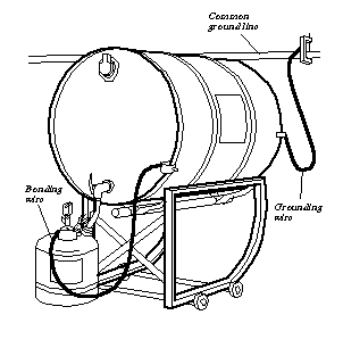Fuel Transfer and Static Electricity Safety
Some workers may not be aware of this, but static electricity can become a huge threat in the workplace, especially when working on or around fueling operations. If there is a discharge of static electricity while fuel is being dispensed, there is a possibility of an explosion or fire erupting.
 In simple terms, static electricity is defined as an imbalance of negatively and positively charged particles. In order to reduce this hazard at your workplace, remember and understand the term ‘Bonding & Grounding.’ This is a safeguard that will prevent the potential for static discharge to occur during fuel transferring activity.
In simple terms, static electricity is defined as an imbalance of negatively and positively charged particles. In order to reduce this hazard at your workplace, remember and understand the term ‘Bonding & Grounding.’ This is a safeguard that will prevent the potential for static discharge to occur during fuel transferring activity.
The discharge of static electricity while dispensing fuel is a serious hazard that can potentially result in a catastrophic fire or explosion. Static electricity buildup creates a fire safety hazard that is important for you to understand.
Because of this threat, it is extremely important to know how to identify situations and conditions that could be hazardous when dealing with static electricity and fueling operations. You will need to know exactly how to stop static electricity from becoming any type of a factor when fueling. Your life depends on it.
Static electricity and grounding:
The movement of volatile materials through hoses and piping can create electrostatic charge. When the voltage associated with that charge reaches certain levels, a spark can jump across the gap between a dispensing nozzle and a portable container, and ignite flammable vapors. Static charges, however, will not accumulate if equipment is firmly electrically grounded. Grounding “bleeds off” the charges, directing them harmlessly to the earth. Proper grounding dissipates the charges as fast as they are generated.
Fire destruction is one man’s job…fire prevention is everybody’s job!!
Download flyer: STOTW_407_FuelTransferStatic ElectricitySafety.pdf (102.87 kb)
Download Spanish flyer: STOTW_407_FuelTransferStatic ElectricitySafety_esp.pdf (103.13 kb)

